Ballymurphy shootings: MoD says not all soldiers identified
- Published
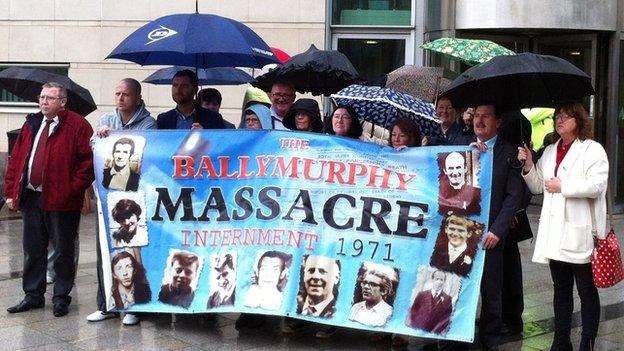
Relatives of those shot dead in Ballymurphy in 1971
The Army has not identified all the paratroopers involved in an operation in west Belfast in which 10 people were shot dead, a coroner's court has heard.
The shootings took place over three days in Ballymurphy, in August 1971.
An 11th person died of a heart attack after a confrontation involving a soldier.
The Ministry of Defence (MoD) has also said it would be impossible to trace the weapons used as serial numbers were not recorded after the incident.
The disclosures were made during a preliminary hearing in Belfast ahead of a new inquest into what bereaved families refer to as the Ballymurphy Massacre.
Lawyers representing relatives had asked the MoD to cross reference the personnel files of the soldiers to establish if they had been involved in other lethal force incidents in Northern Ireland around the same period.
Family members have long believed paratroopers on the ground in Ballymurphy may have also been in Londonderry on Bloody Sunday six months later, when 13 civilians were fatally wounded during a civil rights protest.
In response to the cross-referencing request, a barrister representing the MoD and police said there was no objection in principle to conducting the exercise but revealed not all the soldiers involved in Ballymurphy had been identified.
The barrister told coroner Jim Kitson: "I believe not all have been, but a number have."
Mr Kitson instructed that the cross-referencing should commence on the personnel files of the soldiers the MoD was aware of.
"If there are additional witnesses that need to have that exercise done to their personnel files then they can be added to our list of persons," he said.
Tracing weapons
Later the lawyer for the MoD told the court, which was full with members of the Ballymurphy families, that the MoD would not be able to trace the specific weapons used.
"It's not been possible to trace the specific weapons," he said. "The serial numbers of the weapons discharged were not recorded at that time."
He added: "It will be possible to obtain weapons of a similar type but not the actual weapons."
A barrister representing some of the bereaved relatives expressed concern.
"It is a matter of disappointment, especially as in other historic inquests weapons were capable of being traced," he said.
Bid to have body exhumed
The family of one of the victims, Joseph Murphy, are bidding to have his body exhumed to ascertain if a bullet was left in his body after autopsy.
His family contend that the bullet was fired by a soldier through an already open gunshot wound when Mr Murphy was being held in Army custody after sustaining his initial injury.
The Murphy family's lawyer said the need to identify the weapons used was particularly relevant in their specific case.
The new inquest was ordered by Northern Ireland's Attorney General John Larkin in 2011.
That move came after a cold case review of the deaths by the Police Service of Northern Ireland's Historical Enquiries Team (HET).
At Friday's hearing Mr Kitson told lawyers he was due to meet with experts from the State Pathology department next week to discuss the feasibility of conducting a review of the original pathology evidence.
In 2010, Prime Minister David Cameron apologised for the actions of the paratroopers on Bloody Sunday after a long-running public inquiry by Lord Saville found the shootings had been unjustified, as the victims posed no threat.
However, earlier this year, the government rejected calls for a probe - on a smaller scale - into the events in Ballymurphy, insisting it was not in the public interest.
The next preliminary inquest hearing will take place in September.
Clarification 9 April 2019: This article was amended to remove a reference to the death of John Johnston on Bloody Sunday. This reflects the Bloody Sunday Inquiry's finding about Mr Johnston's death several months after he was wounded in Derry on 30 January 1972. The inquiry report states that his death was "not the result of any of the wounds he sustained on Bloody Sunday".
- Published20 May 2014
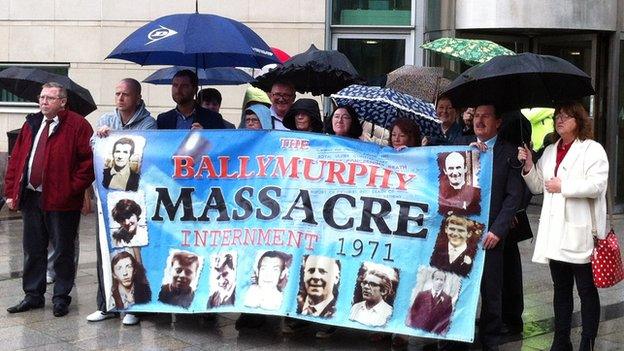
- Published29 April 2014
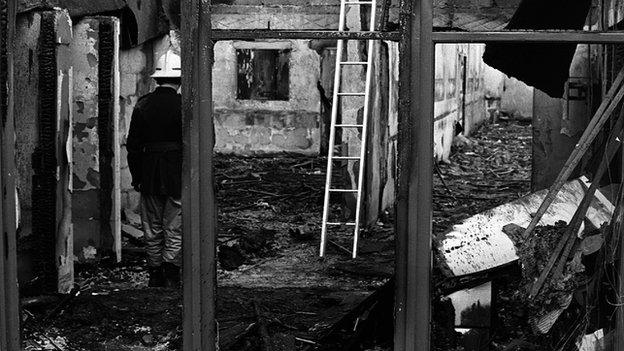
- Published3 March 2014

- Published30 January 2014

- Published27 January 2014

- Published10 July 2013

- Published11 February 2013
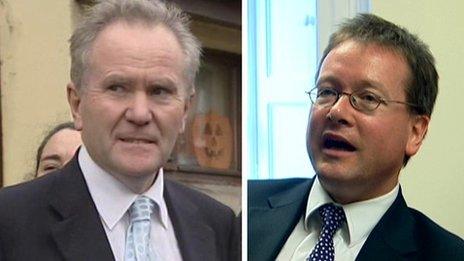
- Published9 October 2012
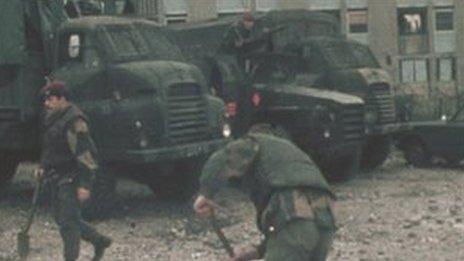
- Published20 June 2012
